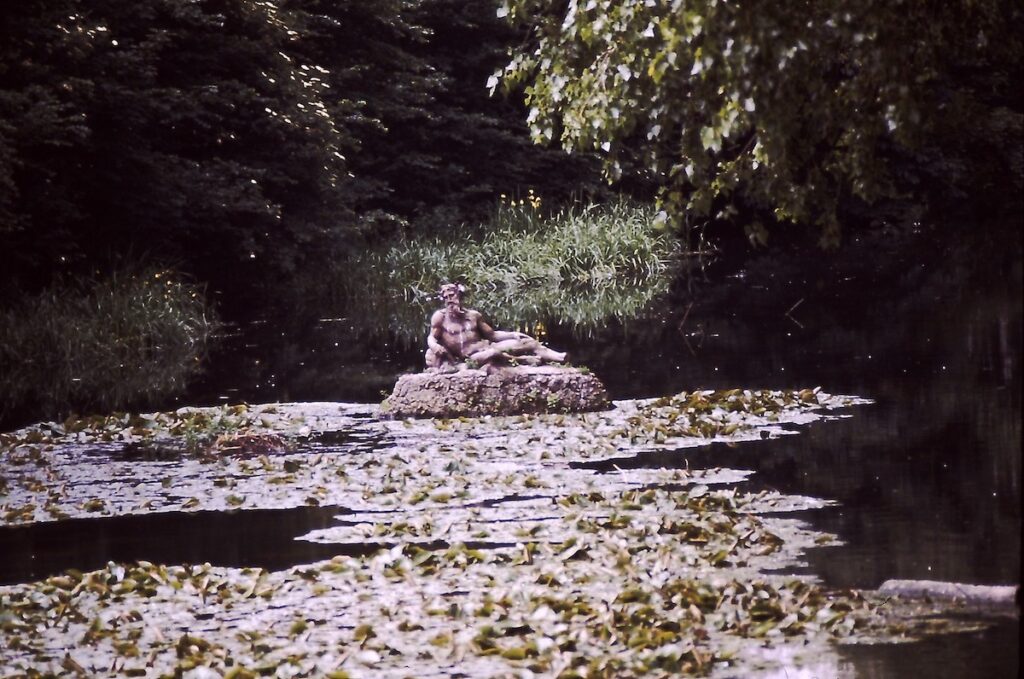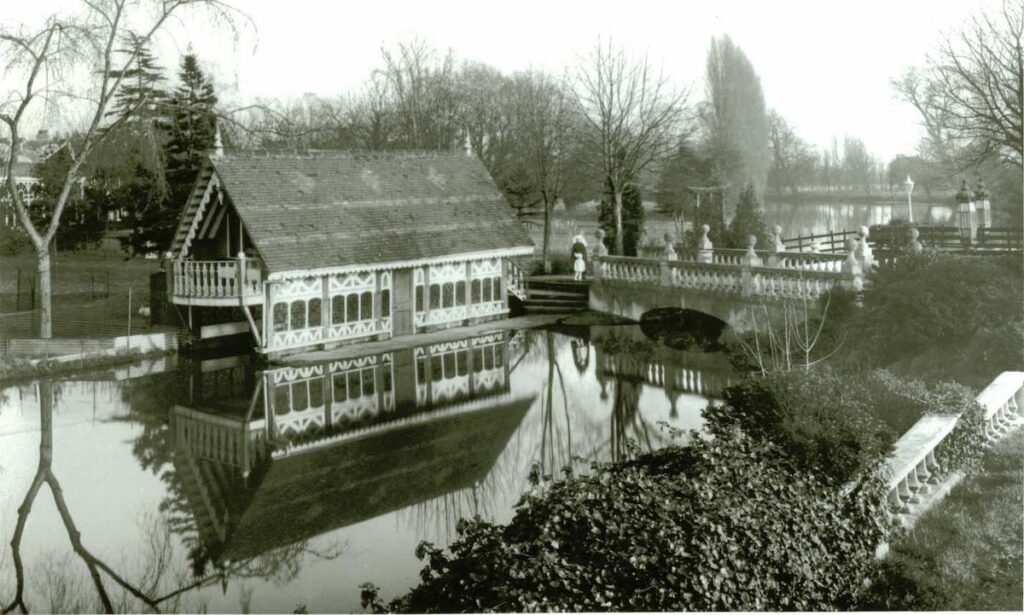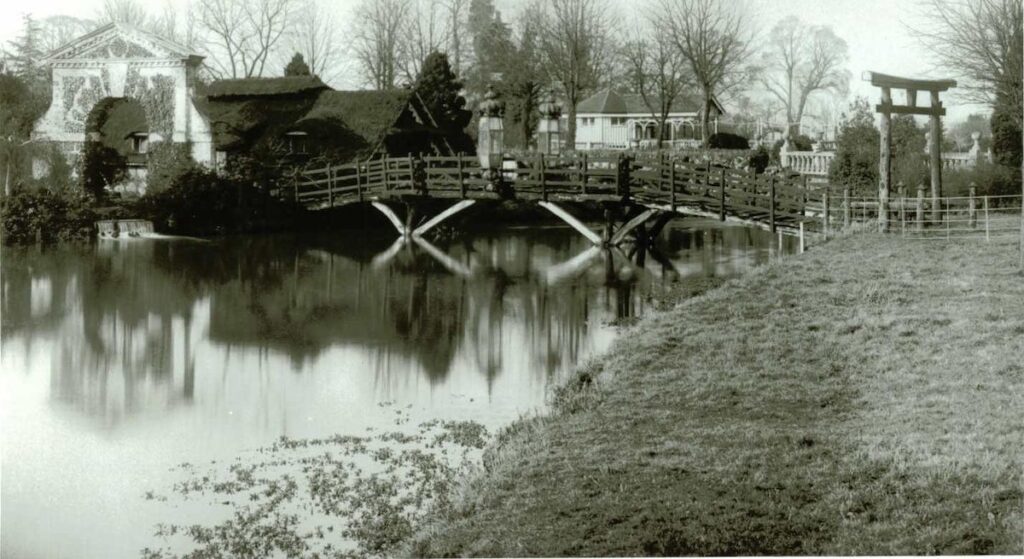By Nick Pollard
We quite often get enquiries about the fragments of buildings, bridges, statues and other masonry that are found along the public park by the River Ash in Littleton. The land was once part of the Littleton Park Estate, owned by the Wood family since the 17th century. After a disastrous fire largely destroyed the mansion in 1874, the family moved away to their estate in Brecon. It was rented out for some years before being sold to Sir Richard Burbidge, Managing Director of Harrods Stores, in the 1890s. Sir Rich-ard spent a great deal of money in embellishing the grounds with boathouses on the river, statues and various other structures. After Sir Richard died in 1917, his son Woodman Burbidge sold the estate to shipping magnate Sir Edward Nicholl, who maintained the grounds to a high standard, before in turn selling to Norman Loudon in 1931, who founded the Sound City film studios. In 1974, Shepperton Stu-dios, going through a rough patch financially, came under the control of Barclay Securities, who intend-ed to close the Studios and develop the site for housing. After a huge furore in the film industry, the studios were saved, but the backlot was sold for housing and the parts of the grounds along the River Ash became a public park. Sadly age and vandalism has taken its toll of what remains, but if you know where to look you can still see remnants of this once exclusive estate.

This picture was taken looking towards the bridge that is today opposite the back gate of the Studios. There were two bridges in parallel, the nearer wooden one with its Japanese style archway led across to a stonework archway, with a boathouse and Japanese garden (which were all the rage at the turn of the 19th century) beyond. In the back-ground was a concrete bridge which is the one that survives today. The stone archway survived until a few years ago. The second picture shows a statue of a river god which still exists between this bridge and Squire’s Bridge.

This picture is looking back towards the earlier viewpoint. In the centre is one of at least four elaborate boathouses which were built along the Ash, and next to it is the concrete bridge with its balustrades. In the background the wooden bridge can also be glimpsed. The balustrading on the right of the picture surrounds another boathouse. Note how open the park appears – all these trees have now grown to maturity and the area is heavily wooded. Sadly we don’t have a picture of this gothic summerhouse (left) in its heyday. It dates back to the period when the Wood family still owned the estate. It stood next to the Ash at the northern end of the present day park, but was unfortunately demolished by the council some 30 years ago as being unsafe The summerhouse contained this urn (right) mounted on a plinth, upon which was the inscription ‘THIS URN IS PLACED BY LADY CAROLINE WOOD TO COMMEMORATE THE LAST VISIT OF KING WILLIAM IV TO THESE GROUNDS ANNO DOMINI 1830’


Apparently the studios have plans to improve the park as part of their new development, although it seems unlikely it will ever return to its former glory.
The next Sunbury and Shepperton History Society talk is ‘Willow – a Local Industry’ by Sally Fletcher-Pemberton on Thurs 20th January at Halliford School, Shepperton, starting at 8pm. Admission £2 for non-members of SSLHS.

